Chapter 13 - Earthquakes and Earth's Interior
1/50
There's no tags or description
Looks like no tags are added yet.
Name | Mastery | Learn | Test | Matching | Spaced |
|---|
No study sessions yet.
51 Terms
Causes of tremors
sudden release of energy (seismic waves) at faults
Elastic rebound theory
a sudden release of strain progressively stored in rocks that bend until they finally break and move along a fault
Epicenter
point on Earth’s surface directly above the focus
Focus
(or hypocenter) the point of initial breakage and movement along a fault, where seismic waves originate
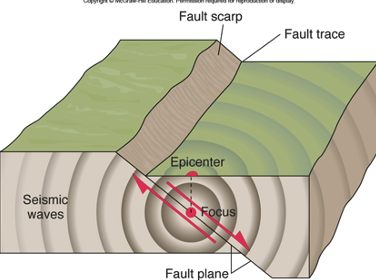
body waves
travel outward from the focus in all directions through Earth’s interior
surface waves
travel along Earth’s surface away from the epicenter
body wave types
P waves, S waves
P wave speed
(4-7km/s), arrive 1st at recording station
what materials do P waves pass through
solids and fluids
P wave motion
compressional (longitudinal), vibrates back and forth parallel to the direction of wave propagation
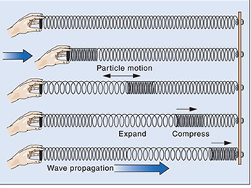
S wave speed
(2-5km/s), arrive 2nd at recording station
S wave motion
shearing (transverse), perpendicular to the direction of wave propagation
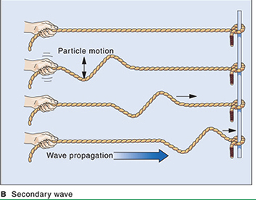
surface wave types
Love waves, Rayleigh waves
Love wave speed
3rd to reach recording station
Rayleigh wave speed
slowest, 4th to reach recording station
What category of waves do actual structural damage?
Surface waves
Love waves motion
side-to-side motion of the ground surface
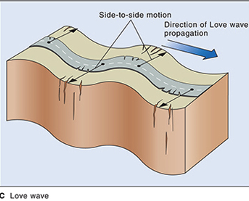
Rayleigh waves motion
ground moves in an elliptical path opposite the direction of wave motion; most destructive to buildings
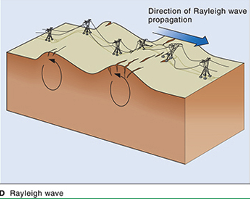
Seismometer
used to measure seismic waves
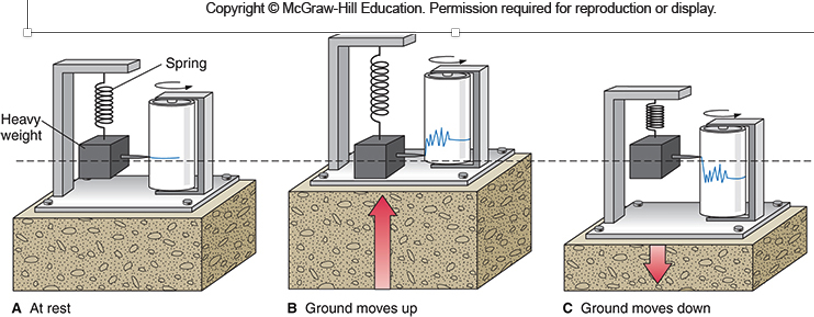
Seismogram
permanent paper (or digital) records of the earthquake vibrations, used to measure the earthquake strengths
Travel-time curve
used to determine distance to the focus point. based on time between first P-wave and S-wave arrivals
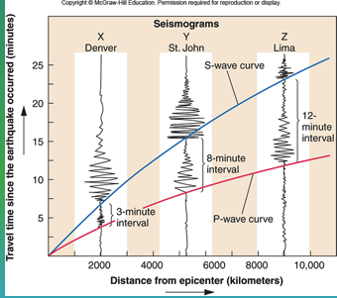
Location of epicenter
Plotting distances from 3 stations on a map
Depth of focus
Distance beneath earth’s surface at which the focus lies
MMS (Modified Mercalli Scale)
a measure of the effects (I-XII) an earthquake produces (on both structures and people)
amplification of shaking in rocks ranked from low to high
Hard igneous rock, Sedimentary rock, Alluvium, Silt, Mud
Richter Scale
(1 - 10) the amount of energy released by an earthquake by measuring the amplitude of seismic waves on a seismogram
Magnitude/earthquake frequency relationship
as magnitude/severity goes up, frequency/amount of earthquakes goes down.
Magnitude rating power
each increase by 1 is 10 times more energy
How much more energy does a 6 quake have than a 3 quake?
1000x
How can earthquakes happen away from plate boundaries
Magma movement pushing up through the earth
New Madrid, MO
High seismic risk area in the middle of the US, 250ma
Where do almost all intermediate to deep focus earthquake occur?
Benioff zones
Common place for shallow focus earthquakes
along the crests of mid-oceanic ridges
Benioff zone
planar earthquake zone within a subduction zone.
Which depth of focus causes the most damage?
Shallow. Seismic waves are stronger the closer they are to the focus point
Earthquake hazards
ground motion, fires, mass wasting, liquefaction, fractures, scarps, aftershocks, tsunamis
liquefaction
solid ground acts like liquid (when looser sediments is more saturated).
Cause of aftershock
little snags in the fault line that release after main quake. Can occur at any time up to years after main shock
requirements for tsunamis
minimum magnitude of 7.5 and a subduction zone. Cont-Ocean or Ocean-Ocean.
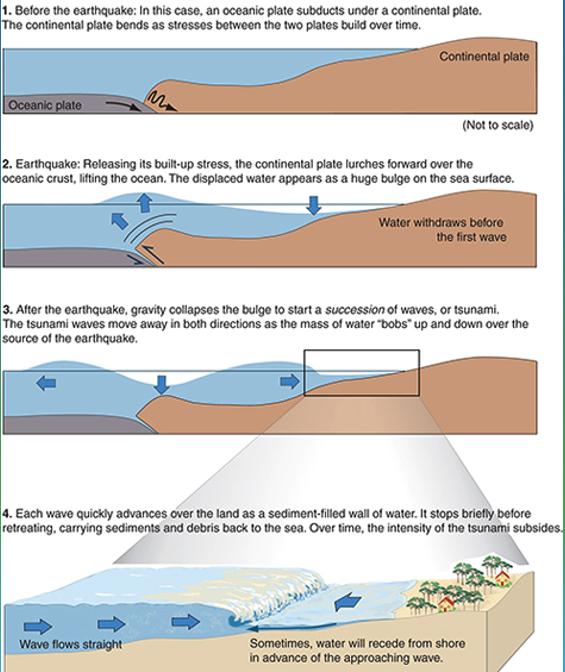
warning sign of a tsunami
retreating water on shore
Intraplate earthquakes
Rare earthquakes that occur in the middle of plates, can occur from ancient faults that have been buried over time.
Earthquake Precursors and Prediction
(NOT DEPENDABLE)
Microseisms – small tremors caused by small breaks in the rocks
Water level in wells
Animal behavior
Foreshocks
Long term prediction example
earthquake will happen in the next 25 years (much more accurate)
Blind fault
Faults that do not reach the surface
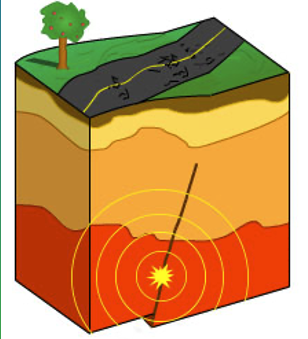
how do we know about the deep earth?
Using seismic waves to create an image (like an X-RAY)
Geophysics
Branch of Geology that studies Earth’s interior using concepts of physics.
Seismic reflection
the return of some waves to the surface after bouncing off a rock layer boundary (based on density)
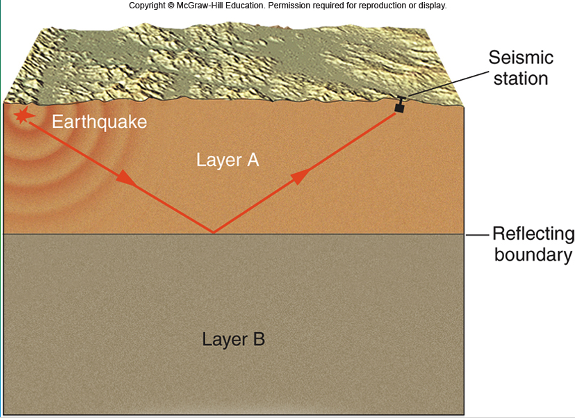
Seismic refraction
bending of seismic waves as they pass from one material to another having different seismic wave velocities

How do we know the earth’s core is liquid?
S-wave shadow zone
Magnetic field origin
a liquid outer core, as the movement of molten iron within it generates electrical currents which create the magnetic field.